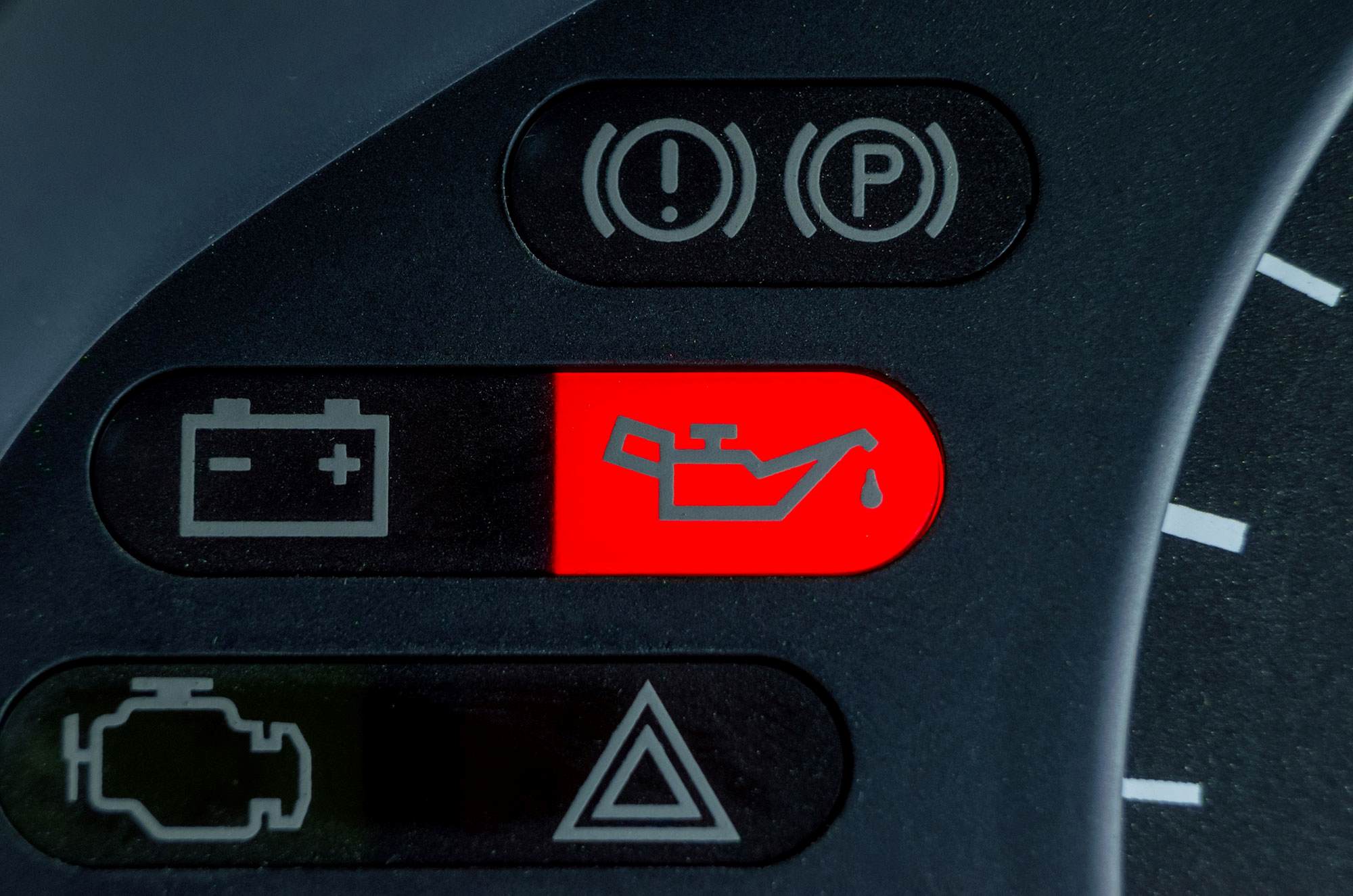Home>Automotive>Discover The Surprising Number Of Axles In Your Vehicle!


Automotive
Discover The Surprising Number Of Axles In Your Vehicle!
Published: February 13, 2024
Learn about the number of axles in your vehicle and their importance in automotive design. Discover surprising facts about automotive axles!
(Many of the links in this article redirect to a specific reviewed product. Your purchase of these products through affiliate links helps to generate commission for Noodls.com, at no extra cost. Learn more)
Table of Contents
Introduction
When we think about the various components that make up a vehicle, we often focus on the more prominent features such as the engine, tires, and body design. However, there is a crucial element that plays a significant role in the functionality and performance of a vehicle – the axles. These often-overlooked components are essential for the smooth operation of cars, trucks, and other vehicles.
In this article, we will delve into the world of axles, exploring their different types, their significance in vehicle dynamics, and the surprising number of axles that can be found in various types of vehicles. Whether you're a car enthusiast, a curious individual, or someone looking to expand their knowledge of automotive engineering, this exploration of axles is sure to provide valuable insights into the inner workings of vehicles.
Join us as we uncover the mysteries of axles and gain a deeper understanding of their role in the automotive world. Let's embark on a journey to discover the surprising number of axles in your vehicle!
Understanding the Different Types of Axles
Axles are integral components of a vehicle's drivetrain, responsible for bearing the weight of the vehicle and facilitating the transfer of power from the engine to the wheels. Understanding the different types of axles is crucial for comprehending the diverse designs and functionalities present in various vehicles.
-
Solid Axles: Also known as live axles, solid axles are a traditional design where the axle shaft is a single piece that connects the wheels on either side of the vehicle. This type of axle is commonly found in rear-wheel-drive vehicles and some heavy-duty trucks. Solid axles are known for their durability and ability to handle heavy loads, making them popular in off-road and commercial applications.
-
Independent Axles: Unlike solid axles, independent axles allow each wheel to move independently, offering a smoother ride and improved handling. This design is commonly used in modern passenger cars, where the suspension and steering components are attached to the vehicle's frame rather than the axle itself. Independent axles contribute to enhanced stability and agility, particularly in vehicles designed for performance and comfort.
-
Drive Axles: In a front-wheel-drive vehicle, the drive axle is responsible for transmitting power from the engine to the front wheels. This type of axle incorporates constant-velocity (CV) joints to accommodate the varying angles and movements of the front wheels during steering. Rear-wheel-drive vehicles feature a drive axle at the rear, delivering power to the rear wheels. Understanding the configuration of drive axles is essential for diagnosing and repairing drivetrain issues in different vehicle layouts.
-
Steering Axles: Found in commercial vehicles and some specialized applications, steering axles are designed to facilitate steering movements. These axles are often equipped with mechanisms that allow the wheels to pivot, enabling the vehicle to navigate tight turns and maneuver in confined spaces. Understanding the unique characteristics of steering axles is crucial for ensuring safe and efficient operation of vehicles designed for specific purposes, such as delivery trucks and buses.
By familiarizing ourselves with the diverse types of axles and their respective functions, we gain a deeper appreciation for the engineering intricacies that contribute to the performance and capabilities of various vehicles. Whether it's the robust simplicity of solid axles or the refined sophistication of independent and drive axles, each type plays a vital role in shaping the driving experience and functionality of modern automobiles.
How Many Axles Does a Typical Car Have?
When we observe a typical car on the road, it may appear that it has only two axles due to the visible presence of four wheels. However, a closer examination reveals that a typical car actually has two axles, each with two wheels connected to it. This configuration is known as a "front axle" and a "rear axle," and it is a fundamental aspect of most passenger vehicles.
The front axle of a car is responsible for bearing the weight of the front end and facilitating steering movements. It is also the point where power is transmitted to the front wheels in front-wheel-drive vehicles. On the other hand, the rear axle supports the weight of the rear of the vehicle and transfers power to the rear wheels in rear-wheel-drive or all-wheel-drive configurations.
In modern cars, the front axle is often equipped with independent suspension systems, allowing each front wheel to move independently, enhancing stability and handling. This design contributes to a smoother ride and improved traction, especially during cornering and uneven road conditions. The rear axle, while typically featuring a solid axle design, may also incorporate advanced suspension components to optimize comfort and performance.
Furthermore, the presence of two axles in a typical car enables the distribution of the vehicle's weight and power across all four wheels, promoting balanced traction and stability. This configuration plays a crucial role in ensuring predictable and controlled handling, particularly during acceleration, braking, and cornering maneuvers.
Understanding the number and configuration of axles in a typical car is essential for vehicle maintenance, diagnostics, and performance optimization. It provides valuable insights for automotive enthusiasts, technicians, and drivers alike, allowing them to appreciate the engineering behind the seamless operation of everyday vehicles.
In essence, the two-axle setup in a typical car exemplifies the harmonious integration of engineering principles and practical functionality, underscoring the importance of axles in shaping the driving experience and safety of modern automobiles.
The Number of Axles in Trucks and Commercial Vehicles
Trucks and commercial vehicles are the workhorses of the transportation industry, designed to handle heavy loads, navigate challenging terrains, and deliver goods and services across vast distances. The number of axles in these specialized vehicles is a critical aspect of their design, directly impacting their load-carrying capacity, stability, and overall performance.
In the realm of trucks and commercial vehicles, the number of axles can vary significantly based on the vehicle's size, intended use, and regulatory requirements. Let's explore the diverse configurations of axles found in these robust machines:
Single Axle Trucks
Smaller trucks and light commercial vehicles often feature a single axle at the rear, supporting two wheels on each side. This configuration provides a balance between maneuverability and load capacity, making it suitable for urban deliveries, small-scale logistics, and specialized applications such as utility and service vehicles. Single axle trucks are known for their agility and versatility, allowing them to navigate narrow streets and confined spaces while efficiently transporting essential cargo.
Tandem Axle Trucks
As the size and load-carrying requirements increase, many trucks are equipped with tandem axles, featuring two sets of rear axles with a total of four wheels. This configuration significantly enhances the vehicle's load capacity and weight distribution, enabling it to transport heavier loads over longer distances. Tandem axle trucks are commonly used in regional and long-haul transportation, construction, and industrial operations, where the ability to carry substantial payloads while maintaining stability and control is paramount.
Multi-Axle Configurations
In the realm of heavy-duty trucks and specialized commercial vehicles, multi-axle configurations are employed to meet the demands of extreme loads and challenging terrains. These configurations can include tri-axle and quad-axle setups, featuring three and four sets of axles, respectively. Such vehicles are designed to transport oversized or exceptionally heavy cargo, such as construction materials, industrial machinery, and specialized equipment. The additional axles distribute the weight more evenly, reducing the impact on road surfaces and infrastructure while ensuring safe and efficient transportation of massive loads.
Specialty Vehicles
Certain commercial vehicles, such as buses, recreational vehicles, and specialized transporters, may feature unique axle configurations tailored to their specific functions. For instance, buses often incorporate tag axles, which provide additional support and stability, especially during passenger boarding and unloading. Recreational vehicles designed for towing may include multiple axles to enhance stability and weight distribution, contributing to a safer and more comfortable travel experience.
In summary, the number of axles in trucks and commercial vehicles is a defining factor that influences their capabilities, load-carrying capacity, and operational efficiency. By understanding the diverse axle configurations present in these vehicles, we gain a deeper appreciation for the engineering ingenuity that drives the transportation industry forward, ensuring the seamless movement of goods and people across diverse landscapes and logistical challenges.
The Importance of Axles in Vehicle Performance
The significance of axles in vehicle performance cannot be overstated, as these essential components play a pivotal role in shaping the dynamics, handling, and overall driving experience of automobiles. From ensuring stability and traction to facilitating power delivery and load-bearing capabilities, axles are integral to the seamless operation of vehicles across diverse road conditions and driving scenarios.
One of the primary contributions of axles to vehicle performance lies in their role in distributing power from the engine to the wheels. In rear-wheel-drive and all-wheel-drive configurations, the rear axle serves as the conduit for transmitting torque to the rear wheels, propelling the vehicle forward with precision and efficiency. Similarly, in front-wheel-drive setups, the front axle is responsible for delivering power to the front wheels, ensuring optimal traction and acceleration. This seamless power transfer, facilitated by the axles, is fundamental to the dynamic capabilities and responsiveness of modern vehicles.
Moreover, axles significantly influence the vehicle's stability and handling characteristics, particularly during cornering, braking, and acceleration. The design and configuration of axles, whether solid or independent, directly impact the vehicle's ability to maintain traction, absorb road imperfections, and navigate challenging terrain. Independent axles, for instance, allow each wheel to react independently to road irregularities, enhancing stability and comfort, while solid axles provide robust load-bearing capabilities, ideal for heavy-duty applications and off-road adventures.
Furthermore, the load-carrying capacity of vehicles is intricately linked to the strength and durability of their axles. Whether it's a commercial truck transporting heavy cargo or a family SUV embarking on a cross-country journey, the axles bear the weight of the vehicle and its occupants, ensuring a smooth and controlled ride. The ability of axles to withstand substantial loads and maintain structural integrity is a testament to their crucial role in upholding the safety and reliability of vehicles under varying operating conditions.
In the realm of performance vehicles, such as sports cars and high-performance sedans, axles contribute to the precise and agile handling characteristics that enthusiasts and drivers cherish. The integration of advanced axle technologies, including limited-slip differentials and adaptive suspension systems, enhances the vehicle's cornering prowess, traction management, and overall driving dynamics. These innovations underscore the pivotal role of axles in elevating the driving experience and pushing the boundaries of automotive performance.
In essence, the importance of axles in vehicle performance transcends their mechanical function, encompassing their influence on power delivery, stability, load-bearing capabilities, and driving dynamics. By recognizing the critical role of axles in shaping the behavior and capabilities of vehicles, we gain a deeper appreciation for the engineering mastery that underpins the seamless and exhilarating experience of driving modern automobiles.
Conclusion
In conclusion, the world of axles is a fascinating realm that intertwines engineering precision with practical functionality, shaping the performance and capabilities of vehicles across diverse applications. From the robust simplicity of solid axles to the refined sophistication of independent and drive axles, each type plays a pivotal role in defining the driving experience and safety of modern automobiles.
The surprising number of axles found in various vehicles, including the two-axle setup in typical cars and the diverse configurations in trucks and commercial vehicles, underscores the adaptability and versatility of axle designs. Whether it's the agile maneuverability of single axle trucks, the substantial load-carrying capacity of tandem axle configurations, or the specialized capabilities of multi-axle setups, the number of axles directly influences the operational efficiency and performance of these robust machines.
Furthermore, the significance of axles in vehicle performance cannot be overstated, as these essential components serve as the conduits for power delivery, stability, and load-bearing capabilities. The seamless transfer of torque from the engine to the wheels, facilitated by axles, underpins the dynamic capabilities and responsiveness of vehicles, ensuring optimal traction and acceleration across diverse driving scenarios.
Moreover, the engineering ingenuity that drives axle designs forward, incorporating advanced technologies such as limited-slip differentials and adaptive suspension systems, exemplifies the relentless pursuit of enhancing driving dynamics and pushing the boundaries of automotive performance. This commitment to innovation underscores the pivotal role of axles in elevating the driving experience and shaping the future of mobility.
By gaining a deeper understanding of the diverse types of axles, their respective functions, and their impact on vehicle performance, we not only appreciate the intricacies of automotive engineering but also recognize the pivotal role of axles in ensuring the seamless and exhilarating experience of driving modern automobiles. As we continue to embrace technological advancements and engineering innovations, the world of axles will undoubtedly remain a cornerstone of automotive excellence, driving the evolution of vehicles and the enhancement of the driving experience for generations to come.













